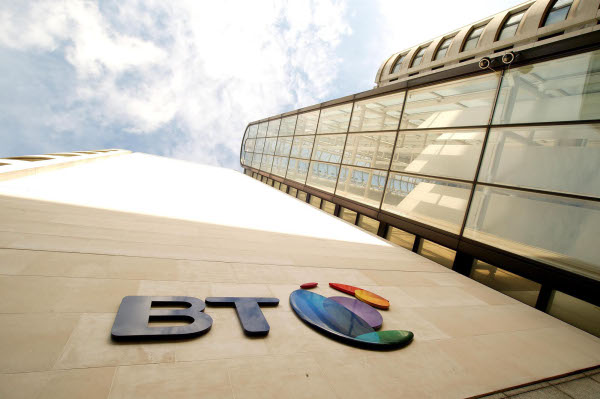Superfast broadband: BT should open up fibre lines, ducts

Telco must learn to share, says comms watchdog
BT could have to open up its superfast broadband lines - as well as its poles and ducts - to rival ISPs under plans unveiled by Ofcom.
The draft regulatory framework, published by telecoms regulator Ofcom yesterday, is aimed at boosting investment and competition in the UK's superfast broadband market.
Speaking in a media briefing in London yesterday, Ofcom CEO Ed Richards said: "Today we are implementing regulatory principles... but we want to see that as part of a process which continues and maintains and builds momentum over the coming months and years."
Ofcom's proposals have two main strands: access for ISPs to any fibre lines laid by BT through a product called virtual unbundling local access (Vula). Second, the opening up of BT's ducts and poles to rival comms providers.
BT should be able to set prices for the Vula wholesale fibre product - in order to make a fair rate of return, the regulator said.
"We want to ensure there is flexibility for BT in wholesale pricing because we think that those superfast broadband products will be constrained by the wider competitive market," said Richards.
This position also reflects the uncertainty and risk of the fledgling superfast broadband market, according to Ofcom.

Ofcom is proposing BT opens its ducts
(Photo credit: BT)
The telecoms regulator defines superfast broadband as greater than 24Mbps - the speed at which copper-based broadband technology is capped.
Richards said Vula is likely to be the "starting point" for communications providers wanting to enter the superfast broadband market in more densely populated locations, such as urban areas. It will enable them to piggyback on BT's fibre network rather than shelling out to build their own.
BT already offers other comms providers access to its network through a wholesale fibre product called Generic Ethernet Access (GEA), which the telco said is being used by 17 ISPs to either trial or provide next-gen broadband services.
Ofcom said GEA "largely meets the properties and attributes which we are looking for in this part of the market". However Richards said there could be a "possible tension" between BT's fibre product and what Ofcom envisages as best for the market.
In addition to the proposed Vula product, Ofcom's draft framework aims to open access to BT's national network of ducts and poles.
The regulator believes this will encourage superfast broadband network deployment in areas where BT hasn't already rolled out fibre - such as remote or rural locations. It will therefore boost competition for next-gen broadband in areas where it's lacking.
Using underground ducts and overhead poles is typically a cheaper and faster way of laying fibre for high-speed broadband than digging up roads to lay cable. Opening access to BT's ducts is also one of the proposals in the Conservative Party's recent 'technology manifesto'. A strategy the party hopes would help to encourage the market to roll out superfast broadband.
Ofcom is proposing that pricing for access to BT's ducts and poles...
..."reflect the cost of providing these" - in order to accommodate instances where BT has to invest in new poles or ducts.
Earlier this month ISP Virgin Media announced a trial of fibre broadband delivered via telegraph poles in a Berkshire village.
There's a lot of "potential interest" around using poles to deliver next-gen broadband, Richards noted, describing it as an "interesting opportunity" to extend fibre in areas where BT fears to tread.
Having the two avenues open to potential superfast broadband providers also enables ISPs to experiment with various approaches, according to Richards. "I think [ISPs] will explore the different options," he noted.
In a statement responding to the Ofcom proposals, BT welcomed the "regulatory clarity and certainty" provided by the Vula fibre wholesale product - and the decision to allow the telco to have freedom on pricing.
On duct and pole access, it added: "There are challenges with such access but we will work with industry to define a suitable product that meets everyone's needs. Duct access is unlikely to be the 'silver bullet' to get fibre to the countryside but all options should be explored."
There is a lot of "potential interest" around using poles to deliver fibre broadband according to Ofcom
(Photo credit: Shutterstock)
BT also noted it would like access to the ducts of other ISPs, such as Virgin Media, however Ofcom said such a move lies outside its remit. "We can only impose remedies on companies if they have significant market power - that is what the law is and we do not find Virgin to have significant market power," said Richards.
Earlier this week, Prime Minister Gordon Brown pledged to push out next-gen broadband access to 100 per cent of UK homes. This goes beyond the more than 90 per cent pledge set out in the government's Digital Britain blueprint for the nation's tech future last year.
Stuart McIntosh, competition partner at Ofcom, said a key challenge with deploying superfast broadband in the UK is the cost of doing so varies "quite considerably" in different parts of the country.
"Whereas it may cost £1,700 to do FTTH [fibre-to-the-home] in urban areas it will cost more than three times that to do that in the last 10 per cent of the UK - i.e. those parts of the UK which are most difficult to reach," he noted.
If solely left to the market to deliver the next generation of broadband in the UK, McIntosh said the last 10 per cent of households would be likely to be left behind - "which is where public policy comes in".
Ofcom's consultation will run until June with the regulator aiming to publish its findings in autumn 2010.